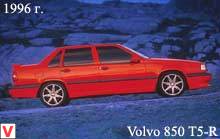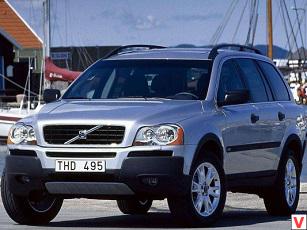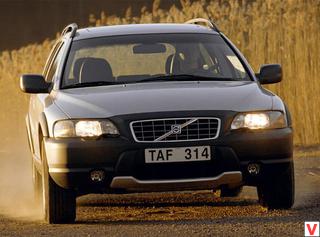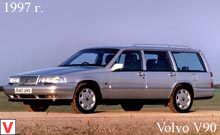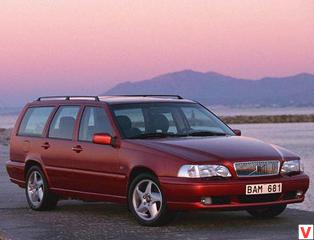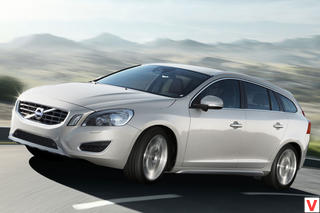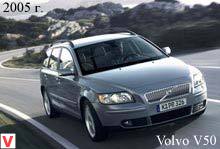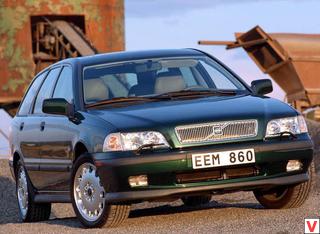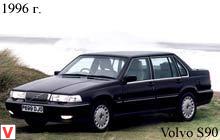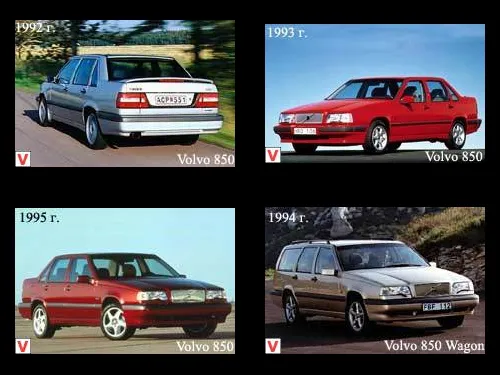
In June 1991, Volvo introduced a completely new model - the 850 GLT. This front-wheel-drive mid-size sedan with a transverse engine has replaced the 240 series and immediately made a lot of noise. The new model had fundamental differences from all previously produced Volvo.
In the design, there was some deviation from the right angles, which allowed subsequent models to finally get rid of the reproaches of “cubism”. The level of dynamics and controllability has noticeably increased. But the best brand-name qualities of Volvo cars, such as reliability, reliability and capacity have been preserved. The Swedes proved that they are able to make modern and fast cars, without giving up the traditional Volvo values. Not surprisingly, in most countries, it is the 850th that became the best-selling Volvo brand. She remains the most common Swedish model on the second-hand market.
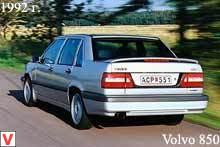
The comfortable, wide Volvo 850 seats are electrically heated. On this model, they began to use head restraints of a new design, and the steering column received a safer performance and began to be regulated under the driver, both in the vertical plane and in the horizontal one. Regularly provided folding child seat, built into the center armrest rear seat. In addition, standard equipment includes electric window lifters and wiper headlights. Visibility is limited a little by wide pillars, rear head restraints and high raised feed, but large heated side mirrors fully compensate for this.
Capacity luggage 415 liters. Special attention Volvo experts, as always, paid to the security system. On the 850th model, it consists of: airbags in the hub of the steering wheel and the glove compartment lid, plus side airbags, which began to be installed in the fall of 1994, as well as additional security bars in the doors and ABS. The first-generation Volvo 850 is outwardly recognizable by its wide headlights and flat tail lights of almost regular rectangular shape. The body of the 850th is made quite soundly and with the head gives the northern origin of the car.
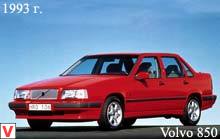
Massive door handles are made so that they are easy to grasp. The joints of the parts are very tightly fitted. Where gaps are unavoidable, hermetic seals are present. In the summer of 1992, the Volvo 850 GLE was introduced. This model differed from the GLT engine only.
On the GLT, a 170-hp 20-valve unit was installed. with a volume of 2.5 liters, they began to install the same unit on the GLE, but with 10 valves and a power of 130 hp, respectively. In May 1993, the five-door station wagon Volvo 850 Wagon presented to the public. Cars are the most practical and excellent to drive. Roomy trunk (up to 1490 liters) is convenient for long journeys. The rear seat is made folding in such a way as to ensure maximum free space in the rear cabin. As for the suspension and engine, they were the same as on the model 850 sedan.
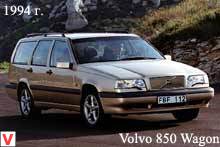
The design of the station wagon of the 850 series has a typically “Volvov” back, a nearly vertical rear wall / door providing excellent roominess. Volvo wagon received the prestigious Japanese Design Award - the 1994 Good Design Grand Prize. In the summer of 1993, Volvo introduced the T5, a turbocharged engine for the 850th series. In fact, it was exactly the same engine as the GLT, but with a reduced capacity of 2.35 liters and a capacity of 225 hp. and installed high-pressure turbine. In 1994, the second generation of the Volvo 850 was released.
After upgrading, the headlights narrowed, the bumpers took on a softer shape. A little later, added new taillights, combined elegantly curved jumper, stretching under the number plate. Such a design is a kind of quality mark for the “850th”.
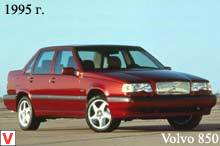
The model almost completely got rid of "childhood diseases", becoming a reliable, used car. In 1994, the 850 T5-R was presented at the Geneva Motor Show - the most powerful Volvo serial car - 250 hp. The power has been increased by 25 hp.
compared with the 850 Turbo due to the installation of a higher-capacity turbine and, as a result, changes in the installation factors of the injection control system. A sedan or station wagon with this engine is capable of gaining 250 km / h, and a car takes 6.7 seconds to accelerate to 100 km / h. Under become engine and chassis. It uses a sports short-suspension, reinforced brakes and tires in size 205/45 ZR 17. The car sported forward-mounted “lower jaw” of the front spoiler, ultra low profile tires on 17-inch wheels and some bright toxic color.
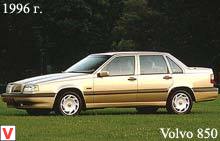
Salon «R» is distinguished by a rich standard equipment and suede upholstery. In 1995, the range of power units was supplemented with a 2.5 liter diesel engine. 1996 was marked by the appearance of the all-wheel drive station wagon 850 AWD (All-wheel drive - four-wheel drive). He became the ancestor of a whole galaxy of all-wheel drive Volvo. The main driving force was a 2.5-liter unit and a low-pressure turbine (193 hp), designed specifically for all-wheel drive Volvo. Transmission "4x4" works as follows. Under normal driving conditions, the front wheels are leading (95% of the engine's energy is supplied to them, the rest is at the rear).
When the front ones start to slip, the visco-clutch by increasing “pumps” energy to the rear wheels - as a result, the situation may arise that already 95% of the torque from the engine will be supplied to them. If necessary, the rear cross-axle self-locking differential is activated, and the anti-slip system “TRACS” performs the role of the front lock. Thanks to this scheme, all-wheel drive Volvo very confidently makes its way, even if the road is covered with a solid layer of fresh snow. But on the true off-road car is still not designed, after all passenger. The 850th was the most progressive among the other Volvo models produced in the early 90s.
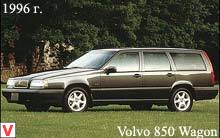
Instead of this series in 1996, the S70 / V70 series was introduced, which has greatly changed in the design of the exterior and interior. The technical side of the question remained unshakable, which confirms the constructive exclusivity of the 850th series that remains to this day. On the basis of the 850 series, also in 1996, a car was produced that can operate on both gasoline and methane, due to the dual fuel system.
Other images auto Volvo 850
